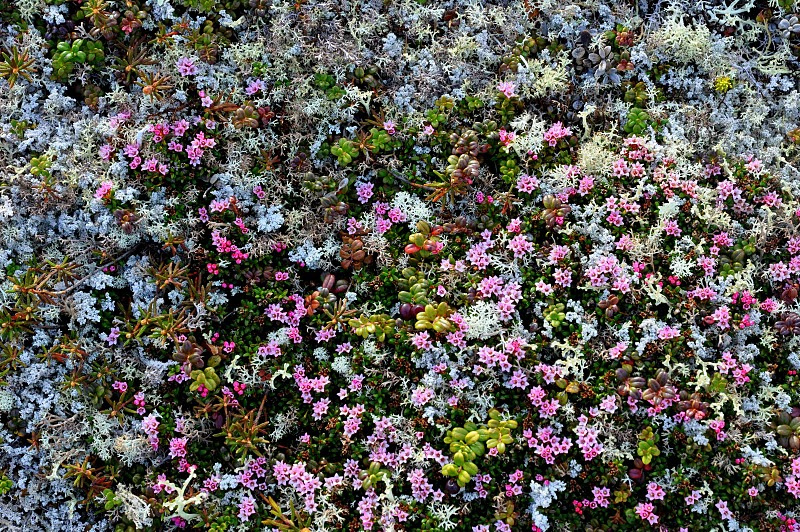Atmospher Sci & Global Chg
Research Highlights
October 2018
As Ecosystems Heat Up, Tundra Changes Speed Up
Understanding the functional traits of Arctic and alpine tundra plant communities will enable better model projections of how they transform in warmer conditions.

Changes in climate can affect tundra plants; changes in plants can in turn affect the climate. Photo: U.S. Environmental Protection Agency. Enlarge Image.
The Science
Rapid warming in Arctic and alpine regions is driving changes in tundra plant communities, with unknown consequences for the function of these ecosystems. A researcher at the U.S. Department of Energy's Pacific Northwest National Laboratory contributed to an international study that combined more than 56,000 observations over nearly three decades to examine how the functional traits of tundra plants change over time and space.
Results suggest that plant height and closely related tundra ecosystem functions (e.g., carbon uptake) will show the most rapid changes with near-term warming, which is rapidly happening at high latitudes.
The Impact
The tundra is warming more rapidly than any other biome on Earth, and the potential ramifications are far-reaching due to global-scale vegetation-climate feedbacks. This study provides an understanding of how environmental factors shape biotic communities at the coldest extremes of the planet. The findings will enable improved model projections of tundra changes and related Earth system feedbacks with warming temperatures.
Summary
Because plant functional traits are directly related to vital ecosystem processes such as plant growth and decomposition, understanding trait-environment relationships is critical to predicting high-latitude climate feedbacks.
Researchers explored the biome-wide relationship between temperature, soil moisture, and key plant functional traits through analysis of trait observations and plant community vegetation surveys at 117 Arctic and alpine tundra sites around the Northern Hemisphere. Over nearly three decades (1989-2015), community plant height increased with warming across all sites, but other traits lagged far behind rates of change predicted from spatial temperature-trait relationships. The findings highlight the challenge of using space-for-time substitution to predict the effects of future warming on tundra composition and function.
Acknowledgments
Sponsors: This paper is an outcome of the sTundra working group meeting supported by sDiv, the Synthesis Centre of the German Centre for Integrative Biodiversity Research (iDiv) Halle-Jena-Leipzig (DFG FZT 118). The U.S. Department of Energy Office of Science, Biological and Environmental Research supported Bond-Lamberty as part of the Energy Exascale Earth System Model (E3SM) project.
Research Area: Climate and Earth Systems Science
PNNL Researcher: Ben Bond-Lamberty
Reference: A.D. Bjorkman et al., "Change in Plant Functional Traits Across a Warming Tundra Biome." Nature (2018). [DOI: 10.1038/s41586-018-0563-7].
